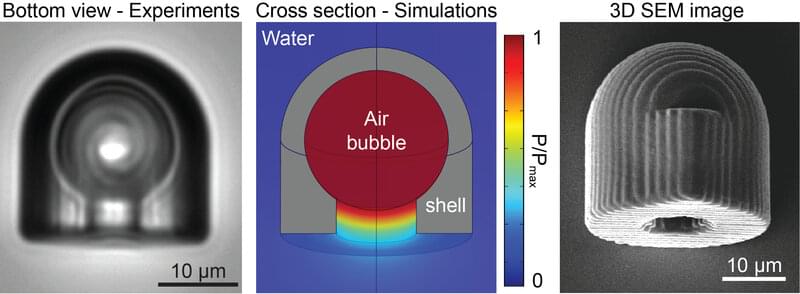Researchers at the Max Planck Institute for Intelligent Systems in Stuttgart have designed and fabricated an untethered microrobot that can slip along either a flat or curved surface in a liquid when exposed to ultrasound waves. Its propulsion force is two to three orders of magnitude stronger than the propulsion force of natural microorganisms such as bacteria or algae. Additionally, it can transport cargo while swimming. The acoustically propelled robot hence has significant potential to revolutionize the future minimally invasive treatment of patients.
Stuttgart—Researchers at the Max Planck Institute for Intelligent Systems (MPI-IS) in Stuttgart developed a bullet-shaped, synthetic miniature robot with a diameter of 25 micrometers, which is acoustically propelled forward—a speeding bullet, in the truest sense of the word. Less than the diameter of a human hair in size, never before has such an actuated microrobot reached this speed. Its smart design is so efficient it even outperforms the swimming capabilities of natural microorganisms.
The scientists designed the 3D-printed polymer microrobot with a spherical cavity and a small tube-like nozzle towards the bottom (see figure 1). Surrounded by liquid such as water, the cavity traps a spherical air bubble. Once the robot is exposed to acoustic waves of around 330 kHz, the air bubble pulsates, pushing the liquid inside the tube towards the back end of the microrobot. The liquid’s movement then propels the bullet forward quite vigorously at up to 90 body lengths per second. That is a thrust force two to three orders of magnitude stronger than those of natural microorganisms such as algae or bacteria. Both are among the most efficient microswimmers in nature, optimized by evolution.
